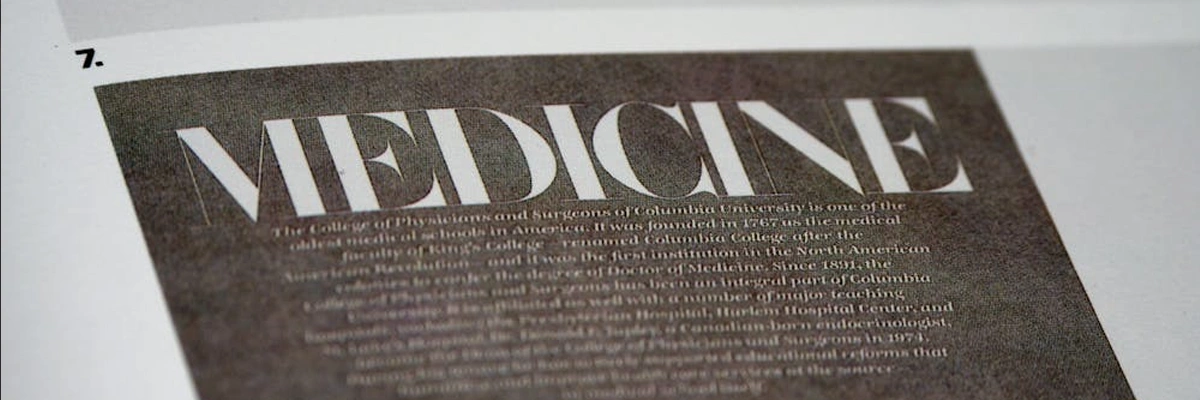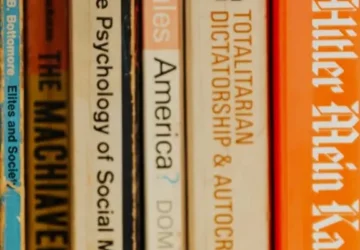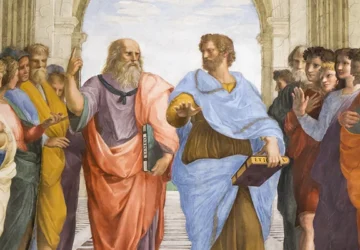
Top Books for Medical Students
Medical school is an onslaught of information. You will spend the next four years (and beyond) immersed in a world of complex facts, intricate diagrams, and high-stakes exams. Your primary focus, understandably, will be on mastering the science of medicine.
But becoming a great doctor requires more than just knowing the Krebs cycle or the branches of the trigeminal nerve. The practice of medicine is not just a science; it is a profoundly human act performed within a complex social system.
The top books for medical students are therefore not just the ones that teach you facts. They are the ones that build the three essential pillars of a truly effective physician:
-
Scientific Knowledge: The bedrock understanding of the human body and disease.
-
Human Empathy: The ability to connect with, understand, and care for the person behind the patient chart.
-
Systemic Understanding: The awareness of the historical, social, and economic forces that shape health and healthcare.
This is not just a medical school reading list. This is a guide to building a complete medical mind one that is not only technically brilliant, but also compassionate and contextually aware.
Scientific Knowledge
This is the most obvious pillar. You cannot practice medicine without a deep, functional understanding of the human body. The core curriculum of your first two years will be dedicated to building this foundation, primarily through massive, dense textbooks.
The “must-have” categories are universal:
-
Anatomy: The map of the body. (Gray’s Anatomy remains the historical gold standard, though modern atlases like Netter’s are often more practical).
-
Physiology: How the body works. (Guyton and Hall is a classic).
-
Biochemistry: The chemical reactions of life. (Lehninger or Stryer).
-
Pathology: What goes wrong. (Robbins and Cotran is the definitive text).
These books are not meant to be “read” like novels. As we discussed in our guide on “How to Read Academic Literature Effectively,” they are databases to be interrogated, not stories to be absorbed. Your goal is efficient extraction and synthesis, using techniques like the Cornell Method or active recall.
However, relying only on textbooks creates a dangerous blind spot. Textbooks teach you about diseases. They do not teach you about people. They teach you the “what” of medicine, but not the “why” or the “how.”
For that, you must move beyond the required reading.
Human Empathy

This is arguably the most critical pillar, and the one most often neglected in the pressure cooker of medical school. Medicine is not practiced on “cases” or “conditions.” It is practiced on human beings scared, vulnerable, complex human beings who are often facing the worst moments of their lives.
Without empathy, even the most technically brilliant doctor is incomplete. Empathy is not a “soft skill”; it is a clinical tool. It builds trust, improves communication, and can even impact patient outcomes. But it is also the first thing to erode under the stress, sleep deprivation, and sheer volume of information in medical training.
The following books are essential inoculations against that erosion. They are medical empathy books that force you to confront the human core of your chosen profession.
1. “When Breath Becomes Air” by Paul Kalanithi (2016)
This is required reading for anyone entering medicine. It is a memoir written by a supremely talented neurosurgical resident who, on the cusp of finishing his grueling training, is diagnosed with terminal lung cancer.
The book is devastating, beautiful, and profound. Kalanithi writes with the precision of a scientist and the soul of a poet. He grapples with the question: What makes a life worth living in the face of death?
But its unique power for medical students is its dual perspective. Kalanithi is both the brilliant doctor, analyzing his own scans with clinical detachment, and the terrified patient, navigating the confusing, impersonal, and often dehumanizing healthcare system.
He writes about the moment he realized the profound difference: “As a doctor, I knew the statistics. As a patient, I knew they didn’t apply to me.”
This book forces you to confront your own mortality and the mortality of your future patients. It reminds you that the “case” in Room 302 is a person wrestling with the biggest questions of existence. It is a masterclass in seeing the patient not as a diagnosis, but as a fellow traveler.
2. “Being Mortal: Medicine and What Matters in the End” by Atul Gawande (2014)
If Kalanithi’s book is about facing death, Gawande’s is about facing life—specifically, the realities of aging, frailty, and the limitations of what medicine can (and should) do.
Gawande, a renowned surgeon and writer, tackles the uncomfortable truth that modern medicine, obsessed with “fixing” problems and extending life at all costs, often fails the elderly and the terminally ill. We have prolonged lifespan, but often at the expense of quality of life.
He argues that the medical profession’s goal should not simply be “survival.” It should be enabling “well-being.” This means having honest conversations with patients about their priorities near the end of life. Do they value independence? Do they value being pain-free? Do they value being surrounded by family?
The book blends heartbreaking patient stories (including his own father’s) with a critical analysis of nursing homes, hospice care, and the medical culture that defaults to aggressive, often futile, interventions.
“Being Mortal” is essential because it challenges the “heroic” narrative of medicine. It teaches humility. It forces future doctors to ask not just “What can we do for this patient?” but “What should we do?” It is a foundational text for ethical, compassionate, and truly patient-centered care.
Systemic Understanding

A doctor does not practice in a vacuum. They practice within a complex web of historical forces, economic pressures, social inequalities, and political decisions. Treating a patient’s diabetes without understanding the “food desert” they live in, or prescribing a medication without knowing if they can afford it, is treating a symptom while ignoring the disease.
This pillar is about understanding the context. The following books provide that crucial “bigger picture.”
1. “The Emperor of All Maladies: A Biography of Cancer” by Siddhartha Mukherjee (2010)
This Pulitzer Prize-winning book is a monumental achievement. It is, as the subtitle suggests, a “biography” of cancer itself—a history of our understanding and fight against the disease, from ancient Egypt to modern targeted therapies.
But it is far more than just a history of science. Mukherjee, an oncologist, weaves together the stories of scientists, doctors, patients, and activists. He shows how the “War on Cancer” was not just a scientific battle, but a political, social, and cultural one.
The book reveals the messy, frustrating, and often serendipitous process of medical discovery. It shows how funding decisions, public perception, and institutional rivalries shape the course of research. It explains why progress against cancer has been so slow and hard-won.
For a medical student, this book provides invaluable context. It teaches that medicine is not a series of triumphant breakthroughs, but a long, iterative process of trial and error. It demonstrates the critical interplay between basic science, clinical practice, and public policy. It is a lesson in the history of medicine and the complex system in which future doctors will operate.
2. “Mountains Beyond Mountains: The Quest of Dr. Paul Farmer…” by Tracy Kidder (2003)
This book expands the “system” from the national to the global level. It is the biography of Dr. Paul Farmer, an infectious disease specialist and anthropologist who co-founded Partners In Health (PIH), an organization dedicated to providing high-quality healthcare to the poorest people in the world (initially in Haiti, then globally).
Farmer’s core philosophy is a radical challenge to the status quo. He argues that the biggest barrier to treating diseases like tuberculosis or HIV in poor countries is not a lack of technology, but a lack of will. He exposes the “structural violence”—the systemic poverty, racism, and political inequality—that creates and perpetuates health crises.
Kidder follows Farmer from the halls of Harvard Medical School to the impoverished villages of Haiti and the prisons of Russia. We see Farmer and his team building hospitals, training local healthcare workers, and fighting for access to life-saving drugs that were deemed “too expensive” for the poor.
This book is essential because it forces students to confront the social determinants of health. It shatters the comfortable illusion that medicine is purely biological. It demonstrates, through Farmer’s tireless example, that being a doctor can also mean being an advocate, an anthropologist, and a fighter for social justice. It expands the definition of “healing” from the individual patient to the entire community and the systems that govern it.
Building the Complete Physician
Medical school will give you the tools to treat the human body. These books, and others like them, give you the tools to treat the human being.
The best medical books are those that build all three pillars:
-
The scientific knowledge from your textbooks gives you the competence.
-
The human empathy from memoirs like Kalanithi’s and ethical explorations like Gawande’s gives you the compassion.
-
The systemic understanding from histories like Mukherjee’s and global perspectives like Kidder’s gives you the context.
A great doctor needs all three. Competence without compassion is cold. Compassion without competence is ineffective. And practicing without understanding the bigger picture is like trying to fix a single broken cog without seeing the entire machine.
This medical school reading list is not about adding more work to your already overwhelming schedule. It is about investing in the kind of doctor you want to become.
Recommended for you

Preparing for Exams Using Books and Study Guides
It is the most dreaded and familiar ritual in academic life. It is 1 a.m. The exam is in eight hours. You are surrounded by a wall of open textbooks, and your eyes are scanning a highlighted page for the tenth time. You recognize the words. They feel familiar, like an old song. But when […]

Books Every Student Should Read Before University
University is not just the next step after school. It is a fundamentally different kind of intellectual environment. High school often rewards memorization and acceptance of authority. University, at its best, rewards questioning. It is not just about learning what to think; it is about learning how to think. It is about engaging with complex, […]

What Hobby to Start: Finding Joy in Your Free Time
You don’t need a makeover to feel more alive—you need a habit you look forward to. Two hours a week sketching city corners, a dawn loop around the park, or a Sunday bake that feeds three lunches can shift your mood, your energy, and your calendar. The question behind “What Hobby to Start: Finding Joy […]

How to Read Academic Literature Effectively
Reading an academic journal article is not like reading a novel. It is not like reading a blog post. It is a completely different activity. A novel invites you in. A blog post gives you its point quickly. An academic paper, by contrast, is a fortress. It is dense, written in a specialized code, and […]

Why Classic Literature Remains Relevant
Why do we still read them? This is a question that echoes through classrooms and book clubs. Why do we bother with books written 50, 100, or 200 years ago, by authors who are long dead? The world has changed. We have the internet. We have immediate, global communication. We have new problems, new technologies, […]

What Is Prime Reading and How to Use It Effectively
We are living in the age of “access,” not “ownership.” This cultural shift has already transformed music (Spotify), film (Netflix), and television (Hulu). We no longer buy albums; we access a library. We no longer buy DVDs; we stream a catalog. Now, this model has come for our bookshelves. Amazon, the company that defined the […]

Must-Read Books on Politics and Society
Why does the world feel so chaotic? We watch the daily news and see a storm of seemingly random, disconnected events. A financial market crashes. A new law is passed. A war breaks out. A populist leader rises. A corporation makes a decision that affects millions. We treat these events as “news.” As discrete happenings. […]

Philosophy Books That Change Worldviews
Some books are entertainment. Some are information. A very small few are dynamite. They don’t just add to what you know; they change how you know it. They are philosophy books that change worldviews by locating the hidden assumptions you live your life by the very foundations of your “common sense” and putting a metaphorical […]